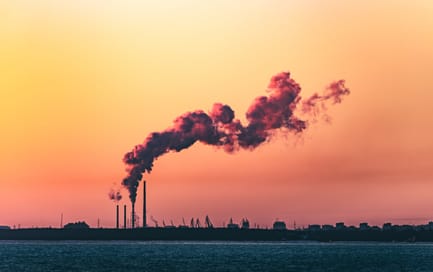
The Environmental Impact of Lockdown

While the COVID crisis has no doubt resulted in tragedy, both in human life and economy, the silver lining of it all is that the environment has benefitted, as evidenced by improvements in air quality, water quality, and possibly wildlife conservation. 3 months into our lockdown, the implications of these improvements on our environmental goals are apparent.
Our Paris Accord goals are achievable, but it will take massive sacrifice to get there
According to an article published by Nature, daily emissions globally are estimated to have fallen by ~17% as of April 2020. To put this into context, researchers estimated that lockdown emissions levels are roughly equal to those back in 2006. This is outstanding progress. Moreover, assuming some form of restricted activity extends through the end of the year, we are looking at ~7.5% decrease in global 2020 emissions, which is coincidentally very close to the number that UNEP recommends we cut emissions annually in order to meet the IPCC 1.5C goal. Said in another way, with the COVID crisis and near global economic meltdown, we are finally on track to reach our climate goals this year.
Though this highlights the ability to reach our goals via reduction in energy consumption alone, it also unavoidably inversely correlates economic impact with environmental impact. The reality is, to bring about the change we need ASAP, COVID has demonstrated that the economy is not likely to be left unscathed. The question for next year is: do we need to shrink the economy another 5%? Seems unconceivable, doesn’t it?
Of course, reduction in demand is not the only means that IPCC points to for overall emissions reduction. Technological development around energy efficiency, carbon neutral power generation, and carbon negative CCUS technologies are huge ingredients that are predicted to offset the need for a disruption in demand. But those are large structural developments that take time and resources. With clean technologies taking multiple decades to come to fruition and most power gen projects clocking in at around 3-4 years of development time, it’s hard to imagine that a truly “green recovery” won’t keep some form of this demand disruption as steady state.
Policy and structural incentives will have to evolve to accommodate progress
Although the environment has generally benefitted from COVID, the same can’t be said for environmental policy. With so much of the demand for carbon reductions gone, prices for environmental offsets have cratered and as a result, cap and trade programs have suffered. This brings to light what will continue to be an issue: once we start getting cleaner, how do we stay cleaner? In times of carbon decrease, caps will need to be artificially increased to accommodate the lower value of carbon. That will mean that though we tout cap and trade as a largely market-based form of regulation, frequent government intervention will be needed when we make progress to ensure that these programs continue to incentivize us in the right direction. And in times like these, when businesses are already suffering, artificially increasing the price of carbon will hurt businesses financially.
Something that could prevent this over-reliance is genuinely increasing the value of carbon. Finding more uses for carbon keeps prices up even in times when we have less of it (and maybe especially in times when we have less of it). What COVID has shown is that focusing our attention on developing technology around carbon use is our most sustainable form of regulation.
Takeaways
So the environmental takeaways from this seemingly surreal time in our life: 1) Decreasing demand to reach our goals is possible and likely necessary. We might have to commit to some level of this disruption in our day to day going forward to reach our climate goals. 2) A large decrease in carbon emissions has unintended consequences on the very mechanisms put forth to achieve them. Increasing the value of carbon should be one of our first priorities to avoid this. 3) Though this crisis is indeed a crisis in every sense of the word, it’s brought forth important learnings that will hopefully guide a smarter green strategy going forward.

